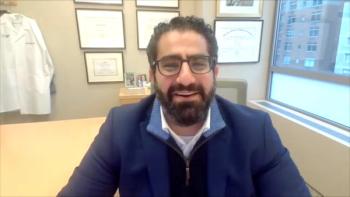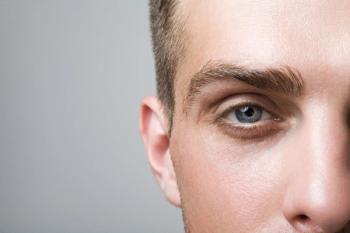
Cycling Training Shows Protective Effects on Gait, Balance in DMD
Both cycling and home-based exercise training helped maintain gait and balance parameters in children with Duchenne muscular dystrophy (DMD), with cycling training also improving antero-posterior balance.
Cycling and home-based exercise training may help preserve gait and balance in patients with
DMD, an inherited condition caused by mutations in the DMD gene, is a progressive disease that causes muscle loss.2 Patients experience increased difficulty with movement over time, eventually needing assisted ventilation, leading to premature death. Balance and gait are both important factors in continued mobility among patients with DMD, and maintaining balance and gait may help patients maintain higher quality of life.1
“Many symptom-focused approaches, including orthopedic, gastrointestinal, rehabilitation, respiratory, and cardiac, are essential in the management of the disease,” the study authors explained. “Among the rehabilitative approaches, submaximal aerobic training, such as cycling and swimming, is considered as recommended exercise modality to maintain mobility from the early stages of the disease process.”
Although research has suggested a range of functional benefits associated with various types of exercise among children with DMD, there have not been any studies evaluating the effects of cycling training on spatiotemporal gait measures in this population. The study authors aimed to determine whether cycling training affects balance and gait measures in ambulatory children with DMD, with the expectation being that it would improve these parameters.
The study included children aged 5 to 12 years who had confirmed DMD, could walk independently, and had been receiving regular steroid treatment over the last 6 months. One physiotherapist randomized patients to a treatment group (n = 11) or control group (n = 12) and implemented treatment protocol, and additional physiotherapists who conducted assessments were blinded to patients’ treatment status.
The control group was recommended a traditional home-based plan entailing 12 weeks of respiratory exercises, stretching, range of motion exercises, and low-intensity bodyweight and resistance training. The sessions lasted approximately 40 minutes and were taught to children and their families at initial evaluation, then weekly online or telephone interviews were done to check adherence and make modifications if needed. The intervention group took part in 40 minutes of supervised submaximal cycling training 3 days per week for 12 weeks under the guidance of a physiotherapist and were recommended 2 additional days of exercise at home to maintain consistency with the control group’s training duration and frequency.
The GAITRite electronic walkway system and the Bertec Balance Check ScreenerTM were used to assess gait and balance, respectively. Patients were assessed before and after the 12-week courses of training to determine differences in gait and balance parameters.
At baseline, balance and spatiotemporal gait measures were similar in the study group and control group, except for antero-posterior sway on perturbed surface with eyes open (P = .008; t = −2.912). Factoring in within-group differences and the time-group interaction, no significant difference or interactions in spatiotemporal gait measures were seen after 12 weeks. However, there was a trend of increased stride length and stride velocity among children in the study group vs a decreasing trend in these parameters in the control group (P > .05).
Within-group comparisons found that the antero-postural sway range on normal surface with eyes open was reduced in the study group after 12 weeks (P = .015). A group-time interaction effect was also seen in the antero-posterior postural sway on normal surface with eyes open favoring the study group (P = .002). There were no significant changes in balance parameters in the control group after 12 weeks.
“This study, which aimed to investigate the effect of cycling training compared with routine home-based exercise training, found that the cycling training was superior to the other in improving for antero-posterior postural sway,” the authors wrote. “The current study also showed that both the cycling and the home-based exercise training groups were able to maintain gait and balance parameters throughout the training period.”
There were several limitations to the study, including the short duration of training and lack of follow-up after the study. Baseline values for antero-posterior postural sway on the perturbed surface with eyes open also differed between the study groups, and the children included did not have a wide range of functional levels. However, the findings suggest cycling training and home-based exercise both helped maintain gait and balance abilities for patients with DMD.
“The study showed that both the cycling training group and the home-based exercise training group were able to maintain gait and balance parameters during the duration of the study,” the authors concluded. “The contribution of cycling training to the improvement of antero-posterior balance was the added value of this training compared to the home-based exercise training.”
References
1. Bulut N, Yalcin AI, Topuz S, Gurbuz I, Yilmaz O, Karaduman A. Effects of cycling training on balance and gait in children with Duchenne muscular dystrophy: a randomized controlled study. Eur J Paediatr Neurol. Published online August 19, 2024. doi:10.1016/j.ejpn.2024.08.001
2. Duan D, Goemans N, Takeda S, Mercuri E, Aartsma-Rus A. Duchenne muscular dystrophy. Nat Rev Dis Primers. 2021;7(1):13. doi:10.1038/s41572-021-00248-3
Newsletter
Stay ahead of policy, cost, and value—subscribe to AJMC for expert insights at the intersection of clinical care and health economics.















































